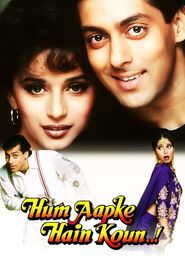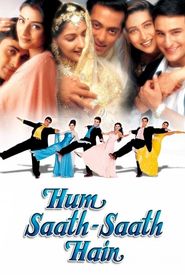Mohnish Behl, a celebrated Indian thespian, emerged into the world in the bustling metropolis of Mumbai, India, leaving an indelible mark on the Indian cinematic landscape. His family boasts a storied past in the realm of entertainment, with his mother, the illustrious Nutan, having carved out a legendary acting career, and his father, the distinguished Rajnish Behl, having served with distinction as a Lieutenant Commander in the Indian Navy.
Mohnish Behl embarked on a remarkable acting career in Bollywood with his debut film "Bekaraar" in 1983, marking the beginning of a journey that would span decades and bring him immense recognition. It was his subsequent collaboration with the renowned director Sooraj Barjatya that would catapult him to greater heights, with films like "Maine Pyar Kiya" in 1989 serving as a testament to his impressive range as an actor.
In "Maine Pyar Kiya", Behl played the role of Salman Khan's elder brother, bringing to life a character that was both caring and responsible. This portrayal resonated deeply with audiences, who were drawn to his nuanced performance and the way he brought depth and emotion to the character. As a result, Behl established himself as a reliable and talented actor in the family-oriented film genre, a reputation that would endure for years to come.
Throughout his career, Behl has consistently demonstrated his ability to bring complex characters to life, earning him a loyal following and critical acclaim. His dedication to his craft and his commitment to delivering high-quality performances have made him a beloved figure in the Indian film industry, and his legacy continues to inspire new generations of actors and filmmakers.
Mohnish Behl's cinematic journey spanned the decades of the 1990s and 2000s, during which time he became an increasingly recognizable figure in both the mainstream and parallel film industries.
His impressive acting repertoire featured a wide range of film roles, including his notable performances in the 1994 blockbuster "Hum Aapke Hain Koun..!", the 1999 family drama "Hum Saath-Saath Hain", and the 2001 epic "Kabhi Khushi Kabhie Gham".
Behl's remarkable ability to effortlessly take on diverse characters, effortlessly transitioning between positive and supportive roles, as well as negative and complex ones, earned him widespread critical acclaim and recognition within the film industry.
Mohnish Behl's professional endeavors extend far beyond the realm of cinema, as he has made a substantial impact in the Indian television industry. His most notable achievement in this domain is undoubtedly his iconic portrayal of Dr. Shashank Gupta in the highly acclaimed and long-running medical drama series "Dill Mill Gayye", which he brought to life from 2007 to 2010.
His masterful interpretation of the character, a wise and compassionate hospital head, earned him widespread recognition and admiration from audiences and critics alike. The character's relatability, coupled with Behl's exceptional acting skills, resulted in a dedicated fan following that continues to praise and cherish his work to this day.
Mohnish Behl's remarkable career has been marked by numerous accolades, with the prestigious Filmfare Award for Best Supporting Actor being a notable highlight, specifically for his outstanding performance in the 1989 film "Maine Pyar Kiya".
Throughout his extensive tenure in the Indian entertainment industry, Behl has had the privilege of collaborating with some of the most iconic filmmakers, allowing him to hone his craft and develop a versatility that has enabled him to seamlessly transition between diverse genres.
As a result of his tireless efforts and unwavering dedication to his craft, Behl has managed to maintain a lasting presence in the Indian entertainment industry, a testament to his enduring appeal and the lasting impact he has had on the world of cinema.
Mohnish Behl, a stalwart figure in Indian cinema, continues to make a lasting impression on the Indian entertainment industry, with a career spanning multiple decades, showcasing his versatility and dedication to his craft, and leaving behind a legacy that is deeply ingrained in the collective consciousness of Indian film enthusiasts and television audiences alike.




































































